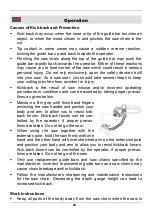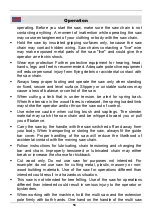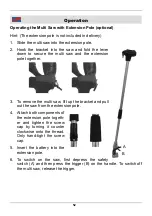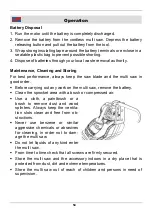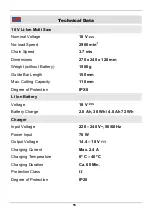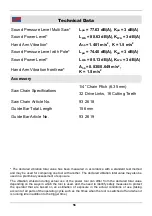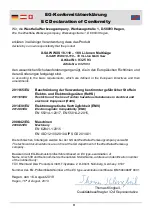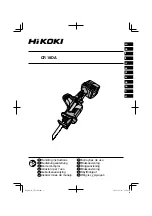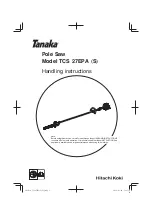
45
Operation
1. Slide a fully or partially discharged battery onto the battery charger.
2. Once charging commences, the red LED will illuminate.
3. When the battery is fully charged, the green LED will illuminate.
If the battery is defective the red LED flashes!
Note:
Make sure the battery and battery charger are lined up correctly. If
the battery does not slide onto the battery charger easily, do not force it.
Instead, remove the battery, check the top of battery and the battery
charger slot are clean and undamaged and that the contacts are not bent.
Battery Charge Level
The battery has a built-in charge indicator. Pressing on the
button to the right will indicate the charge level. The right
LED indicates a high charge level and the left a low charge
level that will mean the battery will require charging soon.
IMPORTANT:
When a low charge level is indicated be
aware the tool may stop operating while using the tool. In
some instances, this may be dangerous. It is recommended to always
ensure the battery has a good charge level.
Notes about Battery Charging
▪
The battery should be charged at ambient temperatures between 10° C
and 40° C (ideally around 20° C).
▪
After charging, allow 15 minutes for the battery to cool before use.
▪
Ensure that the charger is disconnected from the mains supply after
use and is stored correctly.
▪
Do not leave batteries on charge for extended periods and never store
batteries on charge.
▪
The battery charger monitors battery temperature and voltage while
charging. Remove the battery once charging has been completed to
maximise charge cycles of the battery and not waste power.
▪
Batteries can become faulty over time, individual cells in the battery can
fail and the battery could short. The charger will not charge faulty bat-
teries. Use another battery, if possible, to check correct functionality of
the charger and purchase a replacement battery if a faulty battery is
indicated.



















